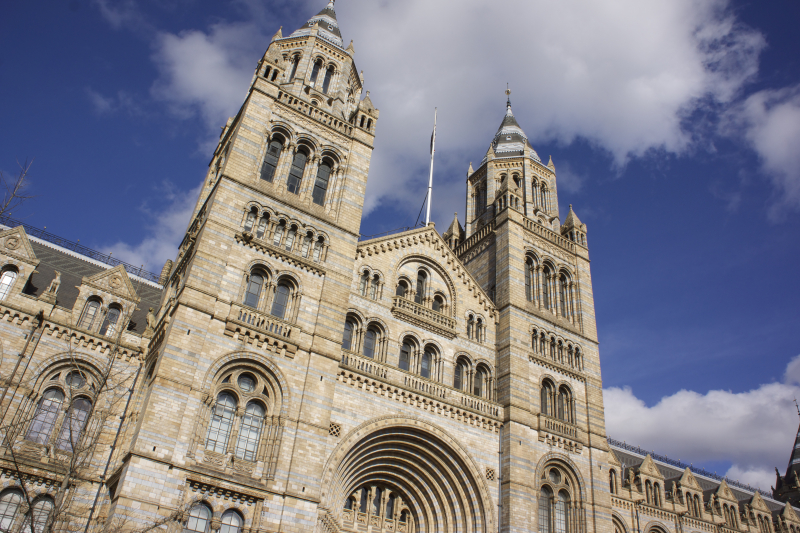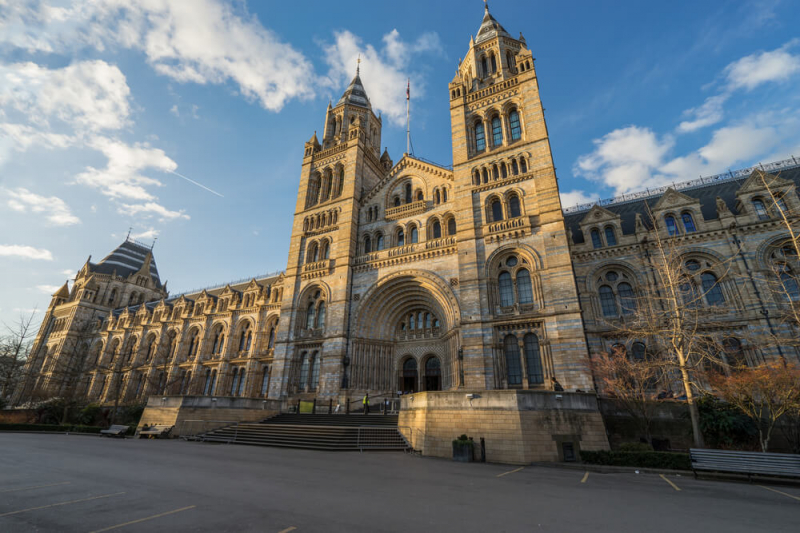Natural History Museum
The Natural History Museum in London is a famous tourist and local destination. It contains a diverse collection of exhibits spanning a wide range of scientific and historical topics, ensuring that everyone may find something to their liking. Sir Hans Sloane surrendered his collection of roughly 70,000 objects to the British Crown in the mid-1700s, and the museum was born. The British Museum was created to store the objects, but by the 1850s, the collection had outgrown the area. The new building opened on April 18, 1881, after the museum's board of trustees organized a competition to design it. Until 1963, the natural history museum was a component of the British Museum.
The galleries of the museum are divided into four sections: red, green, blue, and orange. The Red Zone is devoted to Earth science and history. It is the site of the most complete Stegosaurus fossil yet unearthed. The fossil is approximately three meters in height and six meters in width. Rare minerals, rocks, and jewels can be found in the Earth's Treasury gallery. Learn about the impacts of water and weather on the Earth in the Restless Surface exhibition. A 3.5-million-year-old Laetoli canine, among many other fossils and artifacts, may be seen in the Human Evolution exhibit. A gallery dedicated to volcanoes and earthquakes is also available.
Location: Cromwell Road, London, England SW7 5BD
Website: nhm.ac.uk














